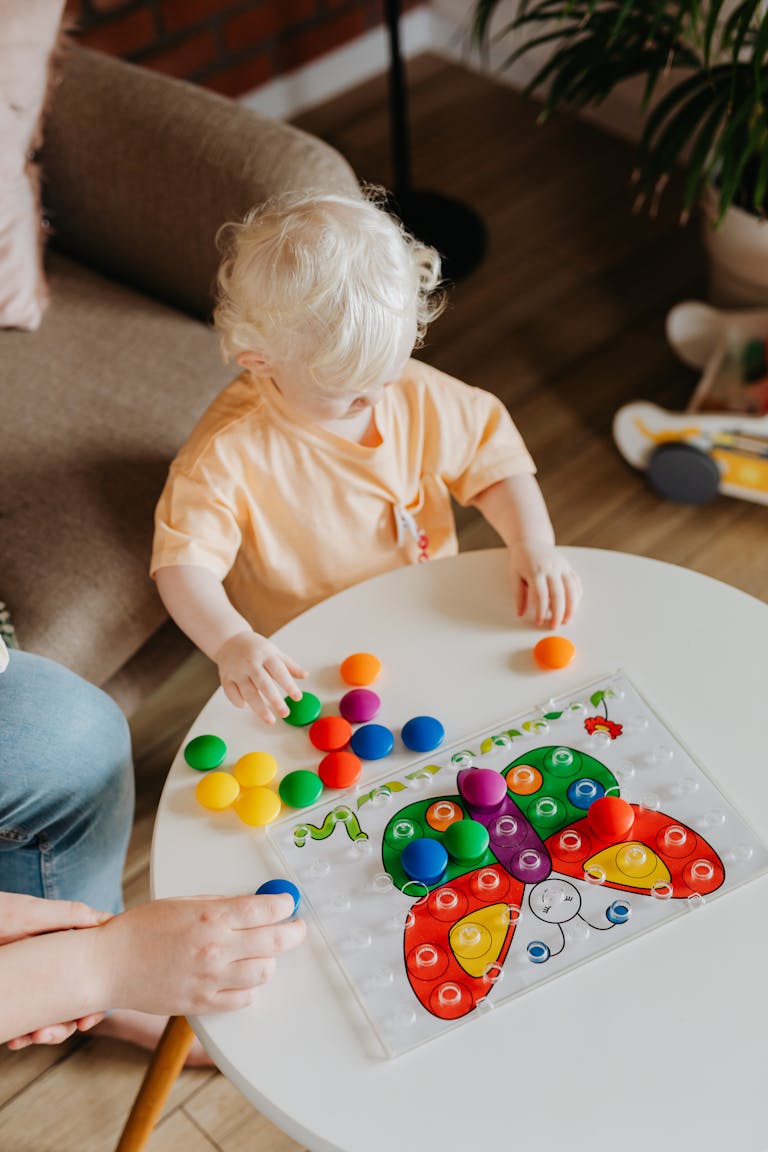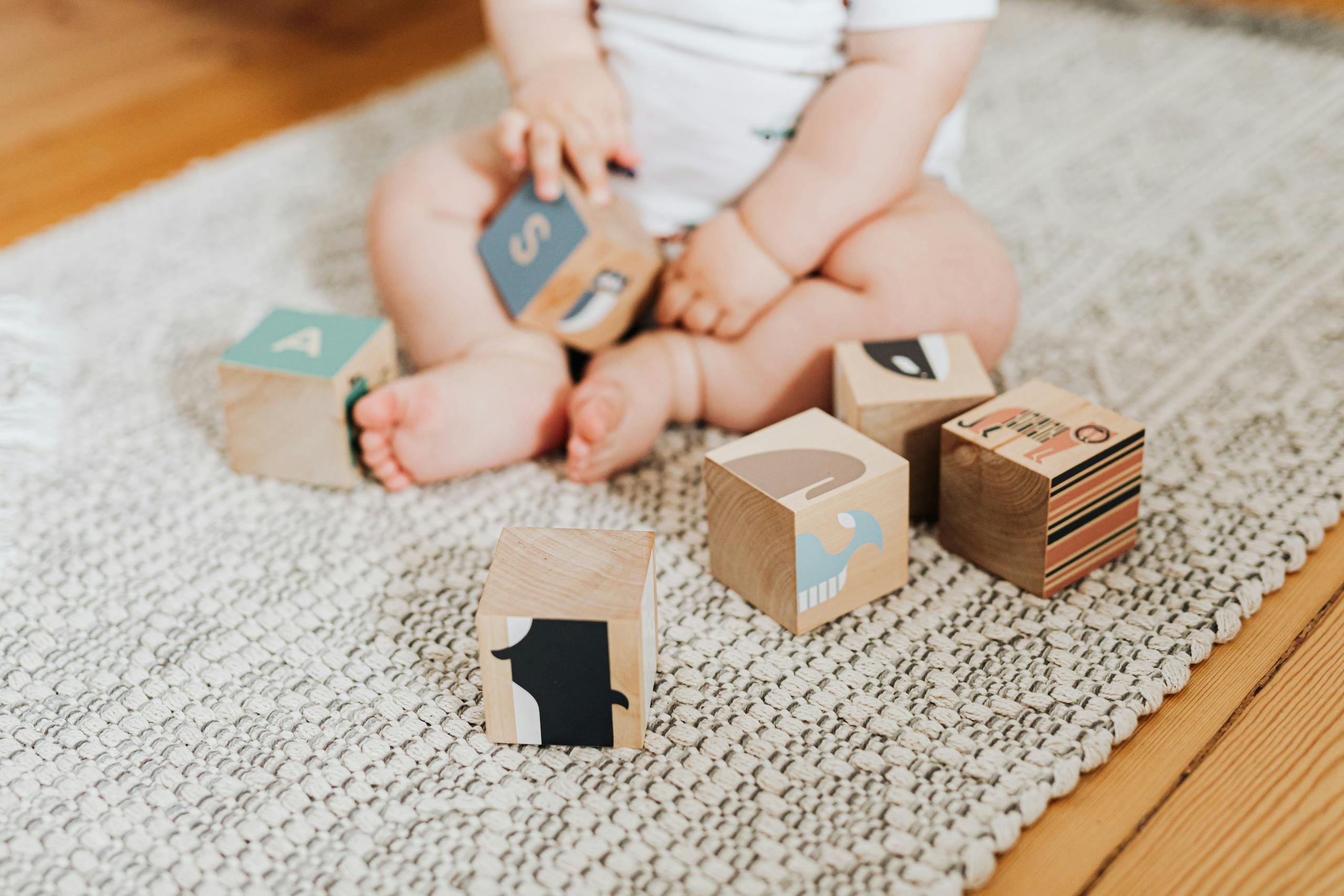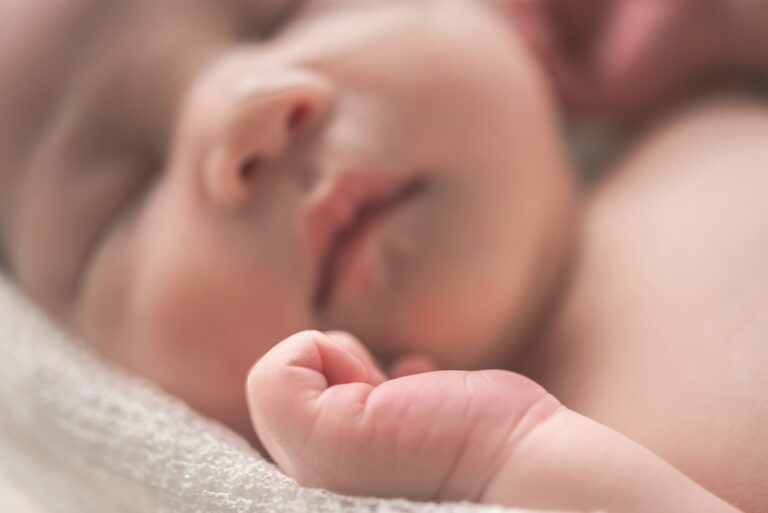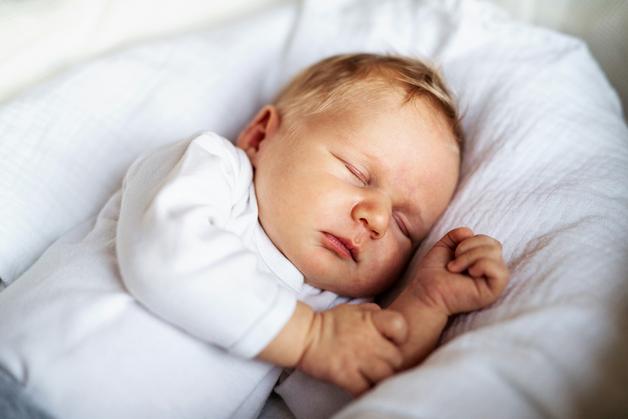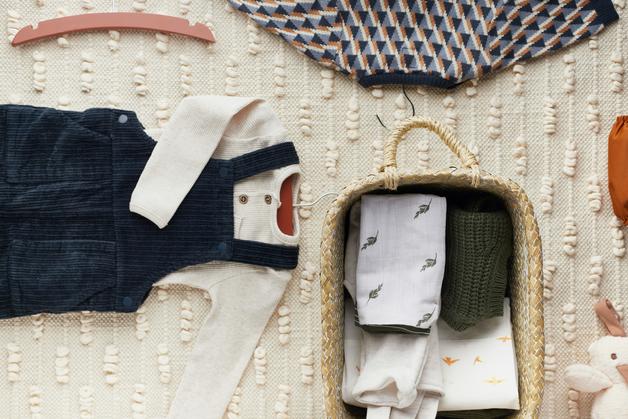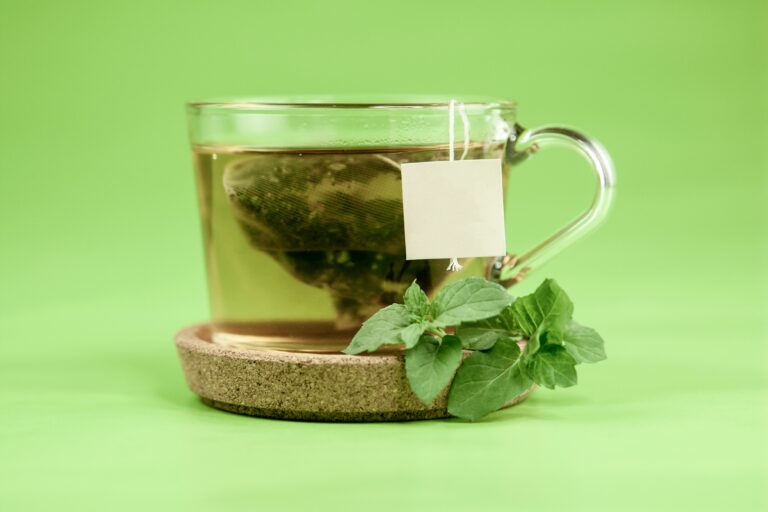Tiny hands reaching for a rattle. Eyes wide with wonder at swirling shapes. Does it ever cross your mind—what is happening inside your child’s rapidly developing brain as she grasps, shakes, or listens? For many parents, these everyday moments spark real questions: Are baby developmental toys genuinely beneficial, or just another item on the ever-growing “must-have” list? Which objects truly help your child’s mind and body grow? Safety—always a paramount concern—hovers in your thoughts. And then, there’s the urge to keep it all joyfully simple, even amidst the swirl of advice and advertising. These questions reveal the tightrope parents often walk: balancing fun, learning, and security, all while deciphering what actually matters for infant development. If that feels familiar, you’re not alone. There are reassuring, evidence-driven answers—let’s demystify the vital role of baby developmental toys and offer accessible, concrete strategies to support every milestone.
How baby developmental toys fuel early development
When a baby shakes a rattle, chases a sensory ball, or gazes at an activity gym, spontaneous play meets brain science. Decades of pediatric neurodevelopmental research show that early experiences lay the groundwork for neural connectivity—billions of synapses forming the foundation for lifelong learning. Baby developmental toys aren’t merely distractions for busy little hands; they serve as genuine catalysts for physical, sensory, and emotional growth. Think of them as portable laboratories, where infants experiment with cause and effect (shaking produces sound), spatial awareness (stacking cups), and language (naming plush animals or colors out loud).
These toys are intentionally built to suit each developmental window, respecting the natural progression of grasping, crawling, babbling, problem-solving, and early social contact. Experts from pediatric occupational therapy underline that “age-appropriate,” “multi-sensory,” and “engaging” are not buzzwords, but evidence-based descriptors—scientifically linked to brain plasticity and behavioral adaptation. Do not underestimate the impact: brain MRI studies confirm that repeated positive interactions with developmentally supportive toys enhance pathways vital for attention span, emotional regulation, and future learning.
But, is every toy on the shelf worthy of a place in your nursery? Not quite. While brightly colored plastic gadgets abound, truly beneficial baby developmental toys encourage curiosity, movement, and creative exploration, without flooding the senses. Key attributes include safe, chew-friendly materials (BPA-free, non-toxic), modifiable levels of complexity, and features that invite both structured play and spontaneous discovery.
Sensory, motor, and cognitive milestones: what do baby developmental toys really do?
Baby developmental toys sit at the intersection of science and play. Why? Because the infant brain craves input—novel sounds, tactile sensations, intriguing sights. Let’s unravel what this means for different domains of growth, and how thoughtfully chosen toys can set a strong foundation:
- Sensory development: High-contrast mobiles, crinkle books, soft blocks, and textured teething rings ignite the sensory cortex. As a baby’s visual acuity and auditory discrimination improve, multi-sensory input stimulates myelination—the biological insulation of nerve fibers—accelerating information transfer in the nervous system.
- Motor skill progression: Activity gyms, graspable rattles, and shape sorters encourage reaching, grasping, and eventually coordinated two-handed play. These activities scaffold both fine (precise finger movements) and gross (arm, trunk, leg) motor skills, aiding the transition from reflexive grasp to intentional manipulation (a predictor of later handwriting and self-care tasks).
- Cognitive growth: Stacking cups and simple puzzles introduce object permanence, cause-and-effect sequencing, and early mathematical thinking. Peek-a-boo games, far from being a simple amusement, promote prefrontal cortex development, supporting memory and attention control.
- Language and social interaction: Puppet play, picture books, and story-telling with plush toys invite early vocalizations and reciprocal “conversations.” Joint attention—when a baby looks at the same toy you do and “shares” the experience—is a robust predictor of later language acquisition and social intelligence.
A holistic approach means blending these domains: offering toys that encourage a child to touch, look, listen, manipulate, and imitate, rather than hyper-focusing on a single “skill.” Observation and flexibility are key. The most effective baby developmental toys often provide open-ended possibilities, adapting as abilities progress.
Age and stage: timing matters with baby developmental toys
You might pause before handing a delicate puzzle to a drooling six-month-old. And rightly so—development unfurls in stages. Matching toys with a baby’s readiness is not only safer, it supports confidence and avoids frustration. Here’s a glimpse into what works best, grounded in pediatric developmental science:
0 to 6 months: awakening the senses
At this stage, infants are hardwired for sensory discovery. Opt for ultra-soft fabric balls, rattles with gentle sounds, newborn-safe mirrors (unbreakable, of course), and black-and-white patterned cloths. Why such simplicity? Early brain circuits are tuned to contrast, movement, and repetition. Gentle tactile experiences—crinkle books, textured teethers—activate sensory neurons without overwhelming immature systems. Tummy-time on activity gyms builds upper body strength, paving the way for rolling and crawling.
Medical explainer: The tactile system (sense of touch) is one of the earliest to develop, playing a vital role in emotional security. Positive tactile input (such as soft, varied textures) boosts oxytocin, the “bonding hormone,” while also supporting sleep and feeding regulation.
6 to 12 months: mapping movement and understanding objects
Now, curiosity sharpens. Coordination improves, allowing more sophisticated exploration. Think sensory balls with varied surfaces, stacking cups, and simple musical instruments (maracas, soft bells). Shape sorters teach spatial relationships, while push-pull cars entice crawling and early walking. Each object acts as a “self-testing” lab— babies experiment, repeat actions, and gradually analyze outcomes.
Medical explainer: Repetitive play strengthens synaptic connections—a process known as experience-dependent plasticity, which polishes both voluntary movement (fine-tuning motor pathways) and cognitive flexibility (the ability to try new solutions when a plan fails).
12 to 24 months: fine-tuning dexterity, sparking imagination
Emerging independence brings new challenges. Chunky construction blocks, ride-on toys, puzzles with large knobs, and washable art materials help develop both patience and creativity. Expect trial and error, as toddlers delight in stacking, demolishing, and starting over. Story-based play with plush animals or simple puppets fosters early narrative thinking and empathy.
Medical explainer: This stage marks a developmental leap in executive functions—the suite of skills that includes attention, impulse control, and working memory. Activities requiring “multi-step” solutions (like inserting shapes or coloring inside boundaries) support the maturation of the prefrontal cortex.
How to select safe and genuinely beneficial baby developmental toys
Scan the shelves of any toy shop and it’s easy to feel overwhelmed. Should you lean toward organic wood, or is silicone just as good? Does “educational” really mean what it claims? The answers have less to do with branding than with biocompatibility and developmental alignment.
- Material safety: Prioritize non-toxic, BPA-free toys (think silicone, hardwood, or organic cotton for chew-friendly exploration). Anything that will land in a baby’s mouth—and most objects will—should be free from phthalates, lead, and dyes known to irritate. Look for certifications like ASTM or EN71.
- Size and construction: Avoid toys with small, detachable parts or sharp angles—choking and injury remain genuine risks. Larger pieces demand a full-palmar or two-handed grasp, reinforcing both safety and developmental opportunity.
- Ease of cleaning: Babies lick, drool, and throw. Toys should withstand repeated washing (hot, soapy water for most materials; check labels for specifics).
- Adaptability and replay value: Strong developmental toys grow with your child. A sensory book might be chewed at four months, then “read” and named later. Open-ended play objects—blocks, stacking cups—invite endless reinvention, making them cost-effective and engaging.
At every age, trust your baby’s reactions. Fatigue, irritability, or loss of interest are signs to simplify or rotate selections. Gentle engagement, not constant novelty, best suits the developing nervous system.
DIY developmental play: transforming everyday objects
A well-stocked nursery is not the only route to stimulating play. Many of the best baby developmental toys are, quite literally, hiding in plain sight:
- Water bottles filled with glitter, beads, or colored oil (secure the cap!) create mesmerizing sensory bottles.
- Fabric scraps sew into tactile squares or soft cubes, inviting hands to explore textures from velour to corduroy.
- Clean measuring cups, wooden spoons, or empty boxes become platforms for banging, stacking, and sorting.
- Water play, foam, or bubbles (always within reach and sight) engage touch, visual tracking, and early scientific curiosity.
- A cardboard peek-a-boo flap or homemade puzzle teaches cause-and-effect, spatial relations, and fine motor control.
The point? Developmental richness arises from simplicity, not excess. Repetition, consistency, and responsive care nurture neural growth, more than any battery-powered “learning” gizmo ever could.
Integrating play into daily rhythm—without pressure
Is daily developmental play compatible with real, messy family life? Absolutely. The secret lies in micro-moments: tiny interludes of focused, gentle interaction, woven into natural routines.
- Create a safe play area, free from clutter and obvious hazards.
- Set aside brief, regular times for hands-on play, interspersed with opportunities for your baby to explore on their own.
- Alternate high-energy play (tummy time, music) with calming, focus-building toys (textured balls, soft blocks).
- Tune into your child’s signals. Joyful engagement signals “just right.” Fussiness or boredom? Pause, simplify, or try later.
Neuroscientific research confirms that even a few minutes of responsive, loving play each day can notably enhance attachment, social learning, and stress regulation.
How much is too much? Avoiding overstimulation
Are flashing lights and loud noises ever necessary? Pediatricians and neuroscientists largely agree: overstimulation can trigger irritability, sleep disruption, and symptoms that mimic attention disorders. Signs of overload include turning away, crying, or “zoning out.” A minimalist approach, grounded in a handful of well-chosen baby developmental toys, often serves infants far better than a room filled with gadgets.
Moderation matters. One or two captivating objects at a time—rotated as abilities flourish—sustain creativity without crowding a young brain. Focus on real connection—narrating actions, eye contact, gentle singing—over constant novelty.
Fostering creativity, language, and social bonds
Educational value soars when playtime becomes conversational. Point to colors, shapes, or animal names. Sing while stacking blocks, devise gentle stories about your child’s favorite plush companion, and mimic sounds discovered by shaking a rattle. Each naming, each pause for laughter, thickens neural connections supporting both language and social skills.
Blocks, cups, fabric books—open-ended tools—allow children to express, invent, and “test drive” new identities. These activities cultivate cognitive flexibility (the ability to shift between ideas) and emotional resilience (coping with frustration when the tower falls).
Introduce inclusive and gender-neutral baby developmental toys—geometric figures, nature themes, diverse dolls and animals. This early openness invites empathy and broadens horizons from the very start.
Where to source baby developmental toys—and practical savings tips
Trustworthy brands matter. Seek out providers with strong safety audits, BPA-free labeling, and independent certifications. Eco-friendly options—think non-toxic wood, recycled plastics—align with both ethical and medical standards. Online specialty shops and educator-recommended brands such as Melissa & Doug, Hape, and Green Toys are known for blending durability with developmental alignment.
Budget concerns? Clean, unbroken secondhand toys can stretch your dollar (sanitize, and always inspect for broken pieces or loose parts). Household objects—pots, egg cartons, scarves—can double as exceptional baby developmental toys with a watchful eye and a little creativity. But never compromise on choking hazard assessment or avoidance of sharp edges/toxins.
Above all, the heart of developmental play lies in authentic interaction—talking, exploring, and celebrating each new discovery together.
Key takeaways
- Baby developmental toys—far from trivial—support core skills: movement, sensory processing, language, and attachment.
- The most advantageous toys are safe, developmentally aligned, and adaptable, enabling open-ended play at every stage.
- DIY play, recycled objects, and open-ended classics (blocks, cups, cloth books) often match or outshine tech-powered alternatives.
- Balanced, mindful play—without overstimulation—builds confidence, curiosity, and healthy brain wiring.
- Gender-neutral and culturally diverse toys help to cultivate empathy and break down limiting preconceptions.
- Signs of boredom or mastery mean it’s time to gently cycle new challenges into your child’s playtime.
- Most importantly, attentive, joyful moments—whether fifteen seconds or fifteen minutes—make the deepest imprint on your child’s developing mind and heart.
Resources exist to support you every step of the way. For tailored guidance, free health checklists, and expert tips, download the Heloa app—your partner in bright, healthy beginnings.
Questions Parents Ask
What are the benefits of using developmental toys for babies?
Developmental toys help nurture essential skills in your baby, such as coordination, focus, and curiosity. Through varied textures, shapes, and sounds, these toys encourage exploration. They can gently support both sensory awareness and early problem-solving abilities. Sharing playtime with these items may also build stronger connection and comfort between you and your little one. Each baby is unique—some will be more attracted to sounds, others to colors and movement—so feel free to observe and adapt according to your child’s preferences.
What types of developmental toys are best for different ages?
For newborns, soft and simple toys—like high-contrast rattles or gentle fabric books—introduce new sights and textures. As babies grow, usually around six months, toys that inspire movement or simple manipulation (stackable blocks, activity mats, shape sorters) become great options. They invite curiosity and gently develop gross and fine motor skills. When your baby approaches a year, toys that involve pushing, pulling, or sorting help support independence and problem-solving. The most important thing is to pick toys suited to your child’s current stage, and to enjoy these discoveries side by side.
